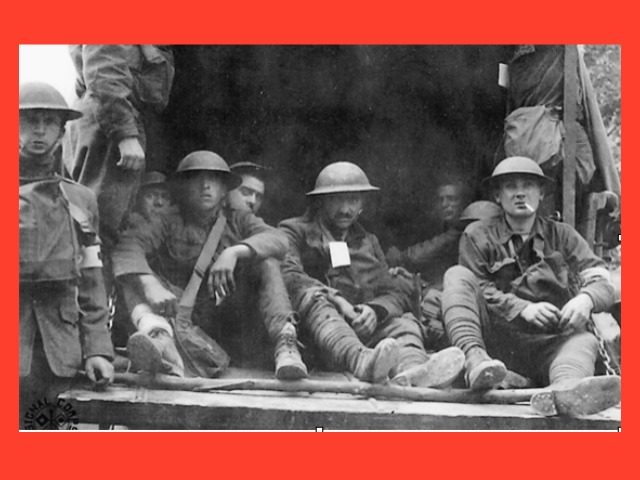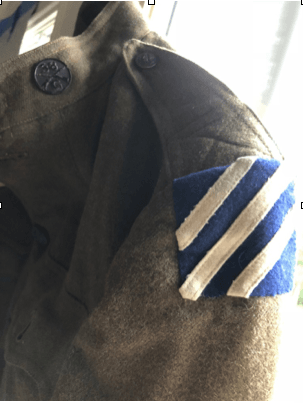This month marks the 100th anniversary of an epic battle where a small band of Americans halted the last German offensive of World War I. For their heroics, the unit would be forever immortalized as the “Rock of the Marne.”
On the sticky summer night of July 15, 1918, German Quartermaster General Erich Ludendorff launched on attack. Waves of German stormtroopers armed with sharpened shovels, flamethrowers and light machine guns clambered into boats and crossed the Marne River near the village of Mezy, about five miles east of Chateau-Thierry. The Americans had recently delivered a sound defeat at Belleau Wood, blunting the Germans’ forward momentum. Ludendorff now hoped to seize the rail hub at Reims and push on toward the French capital.
Standing in his way was the U.S. 38th Infantry Regiment of the 3rd Division.
The story of their courageous stand is retold in my new best-selling book, The Unknowns: The Untold Story of America’s Unknown Soldier and WWI’s Most Decorated Heroes Who Brought Him Home. Recently released, The Unknowns follows eight American heroes who accomplished extraordinary feats in some of the war’s most important battles. As a result of their bravery, these eight men were selected to serve as Body Bearers at the ceremony where the Unknown Soldier was laid to rest at Arlington Cemetery.
Like many of the conflicts of the Great War, the offensive began in the pre-dawn hours of the morning with a creeping artillery barrage meant to soften up the Allied defenses and screen the stormtroopers as they crossed the river. Two full German divisions flowed across the water into the 38th Infantry Regiment, many of them concentrated around G Company’s position. The French forces on the flanks melted away, leaving the Americans alone to face the onslaught.
In defiance of traditional military logic, Colonel Ulysses Grant McAlexander, who commanded the regiment, ordered Captain J.W. Wooldridge, G Company commander, to deploy his first platoon, about 60-men strong, on the edge of the river bank. As one of the French generals observed, “McAlexander fought with one foot in the water.” From this position, the deadly accurate American riflemen and machine gunners were able to take out many of the Germans before they made it across the river.
But the platoon paid a horrendous price for their suicidal stand. All but three men died in the initial attack, and the three who survived were wounded.
Behind them, on the edge of a railway bank, was a second platoon. As the Germans pushed forward, the Americans fought valiantly. But inexorably, the enemy’s greater numbers overwhelmed them. Rather than falling back, a third rushed in to the same position and engaged in “desperate hand-to-hand fighting.” On their heels came the fourth platoon. Wooldridge later noted in his report, “Any of the enemy who battled their way through the three platoons were easy prey for the fourth, and there was absolutely no infiltration on my sector.”
The Americans fought like demons. “Did you ever turn yourself loose in a mad passion that knew no limit? Were you ever blinded by blood and lust to kill and let yourself go in a crowd where you could feel their bodies crumble and sink to the depths below you, then brace yourself on them, and destroy, destroy, destroy?” Wooldridge wrote. “I hope not, but we did.”
Over the course of several hours, G Company beat back the initial assault, slaying more than 600 Germans and taking 383 prisoners, but the battle was far from over.
Mid-morning, the Germans attacked again, this time concentrating on another sector of the line, one assigned to the 30th Infantry. They pummeled the Americans with artillery fire, inflicting devastating casualties. In the heat of battle, about 30 men from the regiment linked up with Wooldridge, who augmented them with some artillery men, “together with my kitchen personnel, company clerks, two runners and three busser operators, and what men I could take from my line.” Despite the fact that they faced some of Germany’s elite stormtroopers, the hastily thrown together unit “took up a position behind rock piles on the south edge of Mezy and repelled the enemy, some 250 strong.”
They moved to a trench nearby but were eventually forced to withdraw. Dashing from rock pile to rock pile, they linked up with G Company. Throughout the battle, the Americans were under constant fire from their own artillery, which Wooldridge said, “seemed to think the whole line had withdrawn because the French did, I presume.” Overhead, French and German airplanes dueled incessantly with the German planes often sending down a torrent of machine-gun bullets.
G Company continued to fight, despite being down to just 52 men from the original contingent of 251. McAlexander received new orders: “Fall back if you think best.”
“Is it up to my decision?” he asked.
“Yes.”
“Then I hold my lines!”
Wooldridge later reflected, “God, what a world of torture and yet solace in that answer! What a world of pain and joy! We were shot to ribbons, cut to small sections, unfed, and oh, so tired; but the drive would never have stopped once they consolidated their lines through the 38th. It was Paris for them and a terrible defeat for us if we withdrew and gave them the little Surmelin Valley.”
But the colonel didn’t just hold. Against all common sense, he ordered the remaining men of the 38th to attack.
In pouring rain, the 38th fought on alongside the 30th. And somehow they prevailed.
“Never have I seen so many dead men, never such frightful battle scenes,” German Lieutenant Kurt Hesse recalled. “The American had nerve; we must give him credit for that; but he also displayed a savage roughness. ‘The Americans kill everybody!’ was the cry of terror of July 15th, which for a long time stuck in the bones of our men. . . . Of the troops led into action on July 15th, more than 60 percent were left dead or wounded, laying [sic] on the field of battle.”
Colonel McAlexander later noted, “Our countrymen will little know and will soon forget the regiment that held the key point against the last great offensive of the Germans. The tide of the World War was stemmed by our regiment at the point where the valley of the Surmelin joins the Marne. From that moment German armies have suffered continuous defeat. May the God of Battles be kind to each of my officers and men.”
The Americans had stopped the German drive. Both McAlexander and Wooldridge were recommended for the Medal of Honor, but both received the Distinguished Service Cross. For the two regiments’ immortal actions, the 3rd Division earned the nickname that it proudly claims to this day: “Rock of the Marne.”
Patrick K. O’Donnell is a bestselling, critically acclaimed military historian and an expert on elite units. He is the author of eleven books. The Unknowns is his newest, and it is featured in Barnes & Noble stores. O’Donnell served as a combat historian in a Marine rifle platoon during the Battle of Fallujah and speaks often on espionage, special operations, and counterinsurgency. He has provided historical consulting for DreamWorks’ award-winning miniseries Band of Brothers and for documentaries produced by the BBC, the History Channel, and Discovery. PatrickkODonnell.com @combathistorian


COMMENTS
Please let us know if you're having issues with commenting.